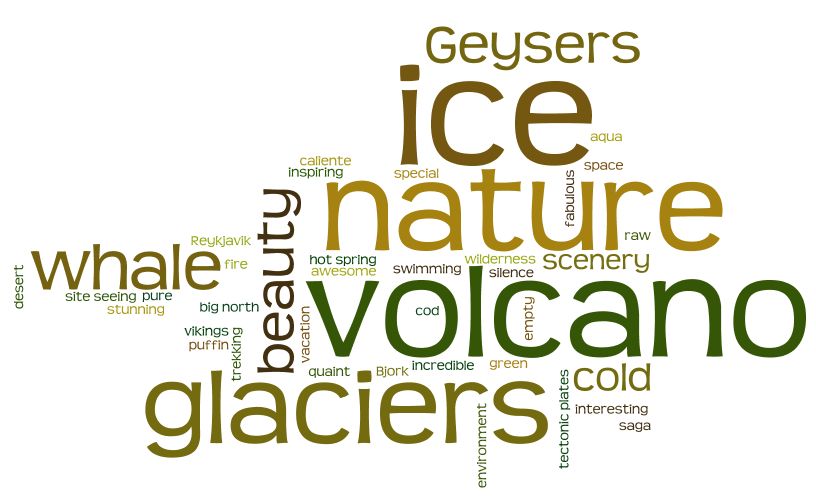FAQ
| Q: |
What is Bárđarbunga? : |
| A: |
Bárđarbunga is an Icelandic subglacial stratovolcano located under the ice cap of Vatnajökull glacier, rising to 2,009 metres (6,591 ft) above sea level, making it the third highest mountain in Iceland, just about 101 metres (331 ft) lower than Hvannadalshnjúkur. Bárđarbunga is Iceland's largest volcanic system, considered to be close to 200 kilometres (120 mi) long and up to 25 kilometres (16 mi) wide.
The Bárđarbunga caldera is about 70 square kilometres, up to 10 kilometres (6 mi) wide and about 700 metres (2,300 ft) deep. The surrounding edges rise up to 1850 metres but the base is on average close to 1100 metres. The volcano is covered in ice, hiding the glacier-filled crater.
Bárđarbunga was a little-known volcano in Iceland due to its remote location and infrequent eruptions. Many tephra layers originally thought to belong to other volcanoes have in the recent studies proved to be from Bárđarbunga. The Gjálp fissure eruption in 1996 revealed that an interaction may exist between Bárđarbunga and Grímsvötn. A strong earthquake in Bárđarbunga, about 5 on the Richter scale, is believed to have started the eruption in Gjálp.
|
| Q: |
Why is the ice blue? : |
| A: |
It’s an optical illusion caused
by the fact that water and ice can absorb yellow and red,
but not blue. Here’s how it works: Sunlight appears
white, but is really made up of all the colors of the
rainbow. Each of these colors has different amounts of
energy in them.
When the sunlight shines through ice
the sun gets broken down into the different colors. Red
and yellow light have weak energy and are easily absorbed.
However, blue light has enough energy to shine through
the ice without getting absorbed. So the blue color we
see in Jökulsárlón and elsewhere is
the result of the blue light having escaped absorption.
When ice is affected by air pockets or
is exposed to air for a long period of time, it appears
white. This is because the white light of the sun, which
is actually comprised of the full spectrum of light from
the sun, is reflected at the boundary between ice and
air, leaving snow and exposed icebergs to appear white.
|
| Q: |
Snow
& Ice? : |
| A: |
There are 56 words in the Icelandic language
for "snow & ice". In English, are only "snow"
and "ice". At the Glacier exhibition in Höfn
you are told everything you ever wanted to know about
Vatnajokull Glacier, and glaciers in general.
|
| Q: |
WHERE IS IT? : |
| A: |
Iceland is a European island midway between
North America and the continent of Europe. It’s the
same distance from New York to Iceland as from New York
to Los Angeles. Mid-Atlantic Location.
|
| Q: |
What
is Oraefajokull - Öræfajökull? : |
| A: |
Öraefajökull , mountain, SE
Iceland, rising from the Vatnajökull glacier. Öraefajökull
is an ice-covered, three-peaked volcano. The largest of
its four recorded eruptions occurred in 1362; all have
been destructive, owing to the devastating floods caused
by melting ice. In 1727 was the second eruption sinch
Iceland was settled 874. Its highest peak, Hvannadalshnúkur
(6,950 ft/2,119 m), is also the highest point in Iceland.
|
| Q: |
How are accommodation and food? : |
| A: |
World-class! Iceland’s hotels and guesthouses are almost invariably clean and comfortable. Food choices are generally wide. “Homegrown” seafood, lobster, fish and lamb dishes are popular and available anywhere. In the more populated areas, international cuisine — including American fast food — has become all the rage. And vegetarians will find plenty of excellent choices.
|
| Q: |
What's there to see besides nature? : |
| A: |
You’re obviously reading this part of the brochure first. But make no mistake — you don’t have to be an outdoors type to fall in love with Iceland! For example, Reykjavík is one of the liveliest, safest, most sophisticated, and modern cities on earth. Its nightlife and cultural offerings are quickly becoming legendary worldwide. Half of Iceland’s population lives in the greater Reykjavík area. History and heritage is world famous, Althingi at Thingvellir and Leifur Eiriksson plus Saga.
|
| Q: |
What kind of money do they use in Iceland? : |
| A: |
The króna, plural krónur (ISK), with
a June 2006 exchange rate of roughly 70 ISK to the US
dollar and 140 ISK to the british pound. Although you
may find a few places that accept US dollars, especially
in the Reykjavík area, you should carry and use Icelandic
money — easily exchanged at the airport, banks, and currency
exchanges. Visa, Master Card, and Cirrus use is pervasive
throughout Iceland. And ATMs are generally not hard to
find.
|
| Q: |
VISA: |
| A: |
A valid passport is necessary for visitors to Iceland, except for citizens of the Nordic countries: Denmark, Finland, Norway and Sweden.
Citizens of the following countries may enter Iceland using, instead of passports, national identitycards issued by the competent authorities in
their countries of origin: Austria, Belgium, France, Germany, Italy, Liechtenstein,
Luxembourg, the Netherlands and Switzerland.
Western Europeans and citizens of the USA, Canada, Australia, New
Zealand, Hong Kong, Singapore and at least two dozen other countries do not
equire visas. Tourist stays are granted for up to three months, and can be easily
extended at local police stations. |
| Q: |
How can I go there: |
| A: |
"You can take a bus from BSI Reykjavik, 08:30. Rent a car and drive about 300-450 km, take a flight. from June 1 to end of August are two flights. |

|
|